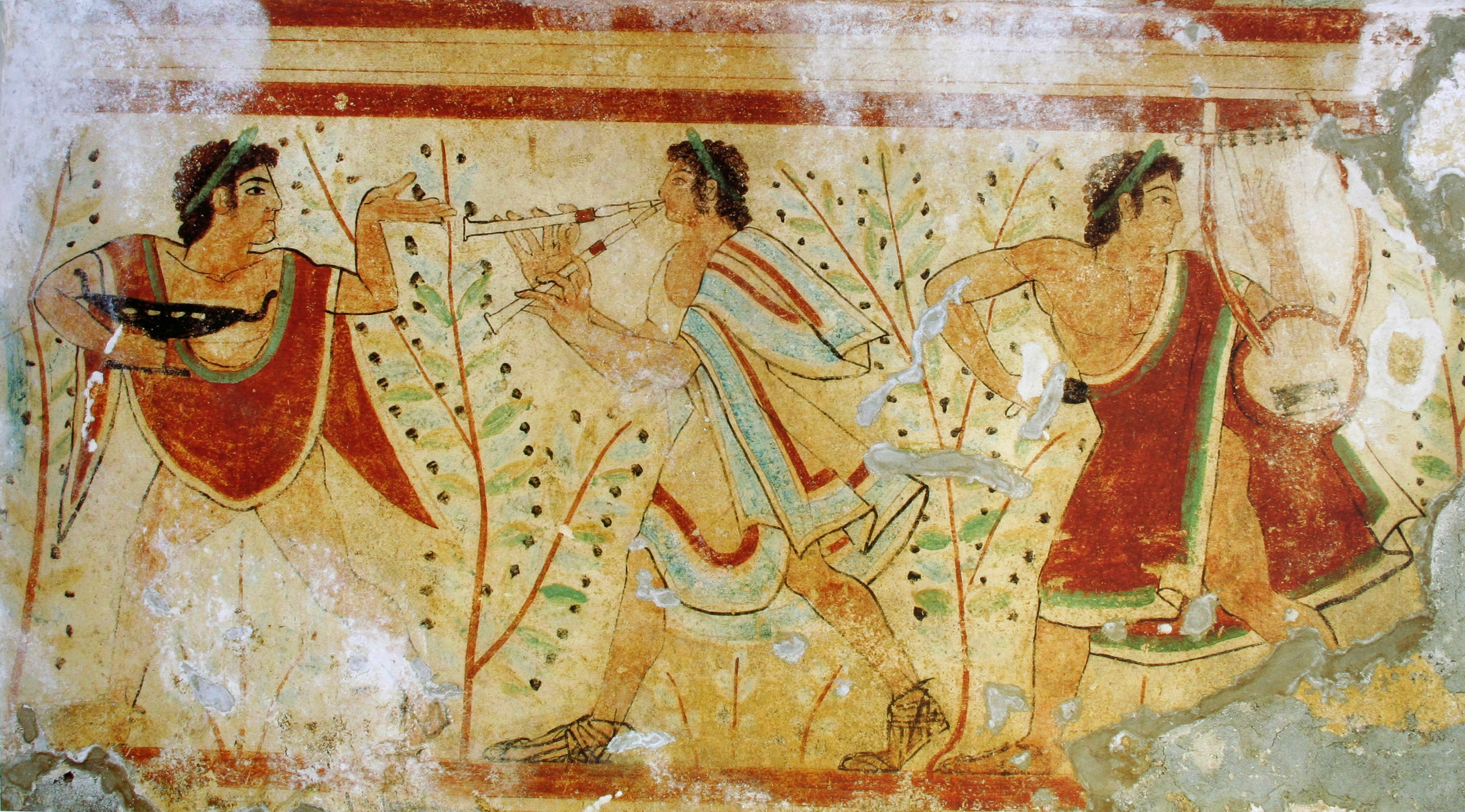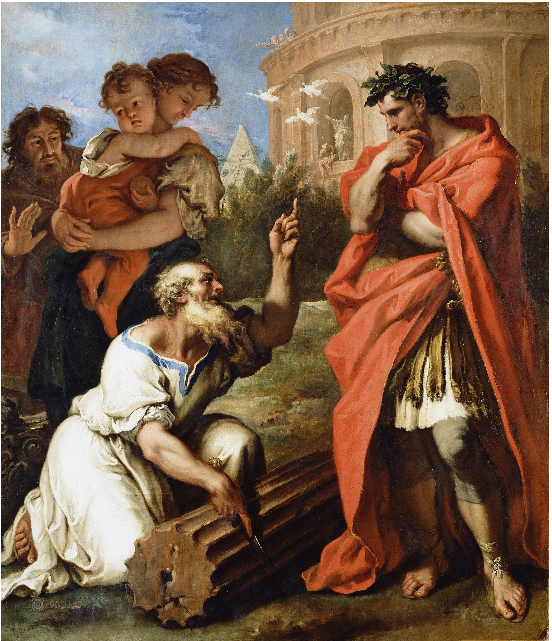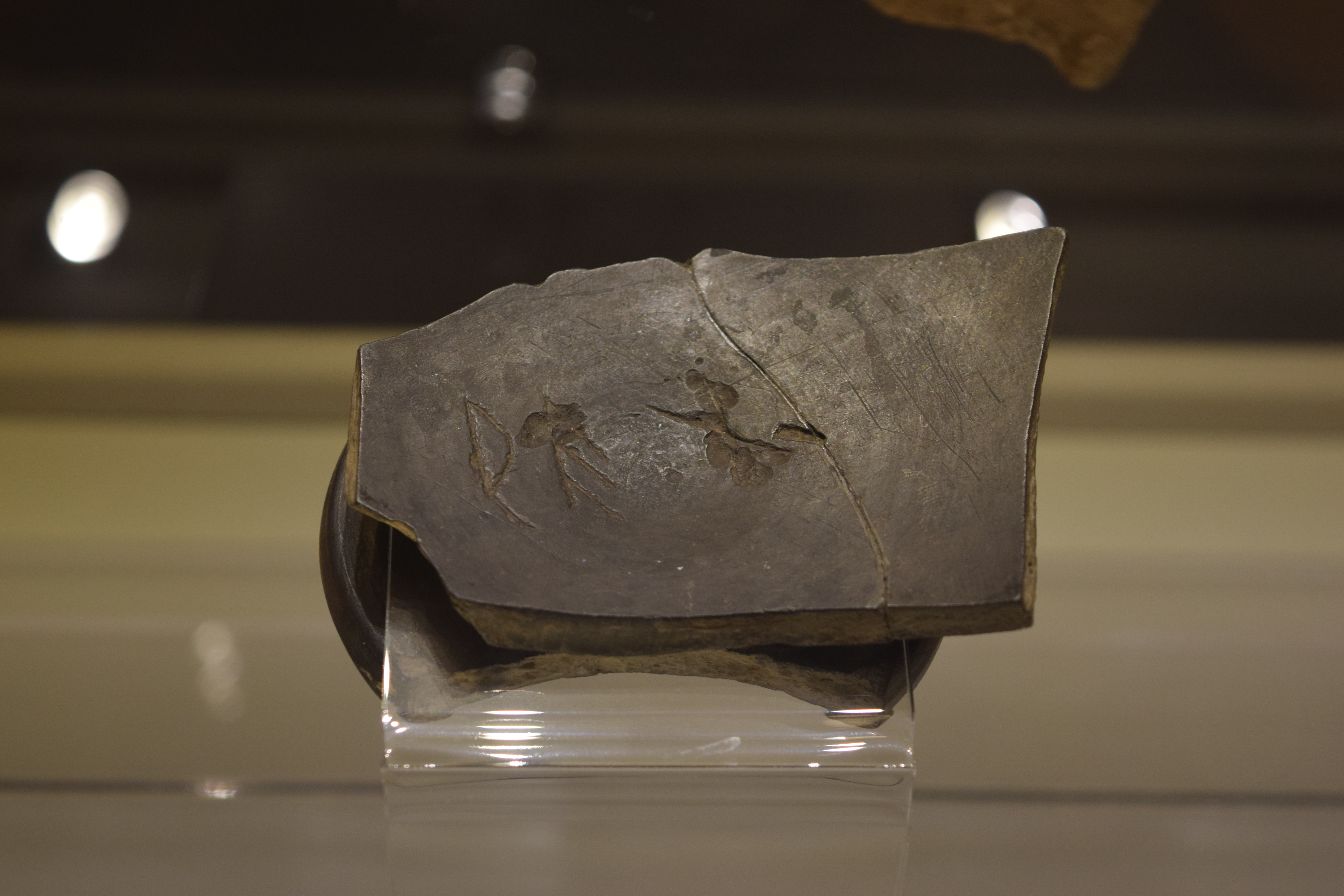|
Turris Mamilia
The ''Turris Mamilia'' ("Mamilian Tower") was a landmark in ancient Rome. It was located in the Subura, a densely populated, notoriously lively quarter of the city. The existence of the tower is attested by an inscription, and it is mentioned by Festus. The tower, considered by the Romans to be "very ancient," was still standing in the early Imperial era. It was thought to have been named after the '' gens Mamilia'', a clan originating in Tusculum who sometimes used the '' cognomen'' Turrinus, an adjectival form of ''turris''. Their mythic genealogy claimed descent from Telegonus and Circe. The Mamilian Tower figured in the ritual fight between the ''Suburaneses'', residents of the Subura, and the ''Sacravienses'' who lived along the Via Sacra, for possession of the severed head of the October Horse. When the ''Suburaneses'' won, the head got to be displayed at the ''Turris Mamilia''; the rival destination was the Regia, the original residence of the Roman kings. The Mamili ... [...More Info...] [...Related Items...] OR: [Wikipedia] [Google] [Baidu] |
Ancient Rome
In modern historiography, ancient Rome refers to Roman civilisation from the founding of the city of Rome in the 8th century BC to the collapse of the Western Roman Empire in the 5th century AD. It encompasses the Roman Kingdom (753–509 BC), Roman Republic (509–27 BC) and Roman Empire (27 BC–476 AD) until the fall of the western empire. Ancient Rome began as an Italic settlement, traditionally dated to 753 BC, beside the River Tiber in the Italian Peninsula. The settlement grew into the city and polity of Rome, and came to control its neighbours through a combination of treaties and military strength. It eventually dominated the Italian Peninsula, assimilated the Greek culture of southern Italy ( Magna Grecia) and the Etruscan culture and acquired an Empire that took in much of Europe and the lands and peoples surrounding the Mediterranean Sea. It was among the largest empires in the ancient world, with an estimated 50 to 90 million inhabitants, roughly 20% of t ... [...More Info...] [...Related Items...] OR: [Wikipedia] [Google] [Baidu] |
October Horse
In ancient Roman religion, the October Horse (Latin ''Equus October'') was an animal sacrifice to Mars carried out on October 15, coinciding with the end of the agricultural and military campaigning season. The rite took place during one of three horse-racing festivals held in honor of Mars, the others being the two Equirria on February 27 and March 14. Two-horse chariot races ('' bigae'') were held in the Campus Martius, the area of Rome named for Mars, after which the right-hand horse of the winning team was transfixed by a spear, then sacrificed. The horse's head ''(caput)'' and tail (''cauda'') were cut off and used separately in the two subsequent parts of the ceremonies: two neighborhoods staged a fight for the right to display the head, and the freshly bloodied ''cauda'' was carried to the Regia for sprinkling the sacred hearth of Rome. Ancient references to the ''Equus October'' are scattered over more than six centuries: the earliest is that of Timaeus (3rd century BC) ... [...More Info...] [...Related Items...] OR: [Wikipedia] [Google] [Baidu] |
William Warde Fowler
William Warde Fowler (16 May 1847 – 15 June 1921) was an England, English historian and ornithologist, and tutor at Lincoln College, Oxford, Lincoln College, Oxford. He was best known for his works on religion in ancient Rome, ancient Roman religion. Among his most influential works wa''The Roman Festivals of the Period of the Republic''(1899). Howard Hayes Scullard, H. H. Scullard, in the introduction to his 1981 book on a similar topic, singled out Fowler's book as a particularly valuable resource despite its age, writing, "I have not been so presumptuous as to attempt to provide an alternative." References External links * * * ''The City-State of the Greeks and Romans: a survey introductory to the study of Ancient History''(1895) ''Julius Caesar and the Foundation of the Roman Imperial System''(1903)''Rome''Home University Library (1912)''Roman Ideas of Deity in the last century before the Christian Era''Oxford lectures (1914) ''Roman Essays and Interpretations''(19 ... [...More Info...] [...Related Items...] OR: [Wikipedia] [Google] [Baidu] |
Peel Tower
Peel towers (also spelt pele) are small fortified keeps or tower houses, built along the English and Scottish borders in the Scottish Marches and North of England, mainly between the mid-14th century and about 1600. They were free-standing with defence being a prime consideration of their design with "confirmation of status and prestige" also playing a role. They also functioned as watch towers where signal fires could be lit by the garrison to warn of approaching danger. The FISH Vocabulary ''Monument Types Thesaurus'' lists "pele" alongside "bastle", "fortified manor house" and "tower house" under the broader term "fortified house". Pevsner defines a peel as simply a stone tower. Outside of this, "peel" or "pele" can also be used in related contexts, for example a "pele" or "barmkin" (in Ireland a bawn) was an enclosure where livestock were herded in times of danger. The rustling of livestock was an inevitable part of Border raids, and often their main purpose. In th ... [...More Info...] [...Related Items...] OR: [Wikipedia] [Google] [Baidu] |
Guy Fawkes Night
Guy Fawkes Night, also known as Guy Fawkes Day, Bonfire Night and Fireworks Night, is an annual commemoration observed on 5 November, primarily in Great Britain, involving bonfires and fireworks displays. Its history begins with the events of 5 November 1605 O.S., when Guy Fawkes, a member of the Gunpowder Plot, was arrested while guarding explosives the plotters had placed beneath the House of Lords. The Catholic plotters had intended to assassinate Protestant king James I and his parliament. Celebrating that the king had survived, people lit bonfires around London; and months later, the Observance of 5th November Act mandated an annual public day of thanksgiving for the plot's failure. Within a few decades Gunpowder Treason Day, as it was known, became the predominant English state commemoration. As it carried strong Protestant religious overtones it also became a focus for anti-Catholic sentiment. Puritans delivered sermons regarding the perceived dangers of p ... [...More Info...] [...Related Items...] OR: [Wikipedia] [Google] [Baidu] |
Roman State
In modern historiography, ancient Rome refers to Roman civilisation from the founding of the city of Rome in the 8th century BC to the collapse of the Western Roman Empire in the 5th century AD. It encompasses the Roman Kingdom (753–509 BC), Roman Republic (509–27 BC) and Roman Empire (27 BC–476 AD) until the fall of the western empire. Ancient Rome began as an Italic settlement, traditionally dated to 753 BC, beside the River Tiber in the Italian Peninsula. The settlement grew into the city and polity of Rome, and came to control its neighbours through a combination of treaties and military strength. It eventually dominated the Italian Peninsula, assimilated the Greek culture of southern Italy ( Magna Grecia) and the Etruscan culture and acquired an Empire that took in much of Europe and the lands and peoples surrounding the Mediterranean Sea. It was among the largest empires in the ancient world, with an estimated 50 to 90 million inhabitants, roughly 20% of t ... [...More Info...] [...Related Items...] OR: [Wikipedia] [Google] [Baidu] |
Roman Republic
The Roman Republic ( la, Res publica Romana ) was a form of government of Rome and the era of the classical Roman civilization when it was run through public representation of the Roman people. Beginning with the overthrow of the Roman Kingdom (traditionally dated to 509 BC) and ending in 27 BC with the establishment of the Roman Empire, Rome's control rapidly expanded during this period—from the city's immediate surroundings to hegemony over the entire Mediterranean world. Roman society under the Republic was primarily a cultural mix of Latin and Etruscan societies, as well as of Sabine, Oscan, and Greek cultural elements, which is especially visible in the Roman Pantheon. Its political organization developed, at around the same time as direct democracy in Ancient Greece, with collective and annual magistracies, overseen by a senate. The top magistrates were the two consuls, who had an extensive range of executive, legislative, judicial, military, and religious powers ... [...More Info...] [...Related Items...] OR: [Wikipedia] [Google] [Baidu] |
Tarquins
The gens Tarquinia was a plebeian family at ancient Rome, usually associated with Lucius Tarquinius Priscus and Lucius Tarquinius Superbus, the fifth and seventh Kings of Rome. Most of the Tarquinii who appear in history are connected in some way with this dynasty, but a few appear during the later Republic, and others from inscriptions, some dating as late as the fourth century AD. Origin The legendary origin of the Tarquinii who reigned at Rome begins with Demaratus of Corinth, a member of the house of the Bacchiadae at Corinth, which was expelled in 657 BC. Demaratus settled at Tarquinii in Etruria, where he married an Etruscan noblewoman, and had two sons, Lucius and Arruns, who took the surname ''Tarquinius'' after the town of their birth. Denied political advancement due to his father's foreign birth, Lucius, encouraged by his wife, Tanaquil, determined to settle at Rome, where he could hope to attain high station based solely on his merits. He fell into the retinue of An ... [...More Info...] [...Related Items...] OR: [Wikipedia] [Google] [Baidu] |
Kingdom Of Rome
The Roman Kingdom (also referred to as the Roman monarchy, or the regal period of ancient Rome) was the earliest period of Roman history when the city and its territory were ruled by kings. According to oral accounts, the Roman Kingdom began with the city's founding 753 BC, with settlements around the Palatine Hill along the river Tiber in central Italy, and ended with the overthrow of the kings and the establishment of the Republic 509 BC. Little is certain about the kingdom's history as no records and few inscriptions from the time of the kings survive. The accounts of this period written during the Republic and the Empire are thought largely to be based on oral tradition. Origin The site of the founding of the Roman Kingdom (and eventual Republic and Empire) had a ford where one could cross the river Tiber in central Italy. The Palatine Hill and hills surrounding it provided easily defensible positions in the wide fertile plain surrounding them. Each of these feat ... [...More Info...] [...Related Items...] OR: [Wikipedia] [Google] [Baidu] |
Kings Of Rome
The king of Rome ( la, rex Romae) was the ruler of the Roman Kingdom. According to legend, the first king of Rome was Romulus, who founded the city in 753 BC upon the Palatine Hill. Seven legendary kings are said to have ruled Rome until 509 BC, when the last king was overthrown. These kings ruled for an average of 35 years. The kings after Romulus were not known to be dynasts and no reference is made to the hereditary principle until after the fifth king Tarquinius Priscus. Consequently, some have assumed that the Tarquins' attempt to institute a hereditary monarchy over this conjectured earlier elective monarchy resulted in the formation of the Republic. Overview Early Rome was ruled by the king (''rex''). The king possessed absolute power over the people, no one could rule over him. The Senate was a weak oligarchy, capable of exercising only minor administrative powers, so that Rome was ruled by its king who was in effect an absolute monarch. The Senate's main function was ... [...More Info...] [...Related Items...] OR: [Wikipedia] [Google] [Baidu] |
Regia
The Regia ("Royal house") was a two-part structure in Ancient Rome lying along the Via Sacra at the edge of the Roman Forum that originally served as the residence or one of the main headquarters of kings of Rome and later as the office of the '' pontifex maximus'', the highest religious official of Rome. It occupied a triangular patch of terrain between the Temple of Vesta, the Temple of Divus Julius and Temple of Antoninus and Faustina. Only the foundations of Republican/Imperial Regia remain. Like the Curia it was destroyed and rebuilt several times, as far back as the Roman monarchy. Studies have found multiple layers of similar buildings with more regular features, prompting the theory that this "Republican Regia" was to have a different use. History According to ancient tradition it was built by the second king of Rome, Numa Pompilius, as a royal palace. Indeed, the Latin term ''regia'' can be translated as ''royal residence''. It is said that he also built the Temple ... [...More Info...] [...Related Items...] OR: [Wikipedia] [Google] [Baidu] |








